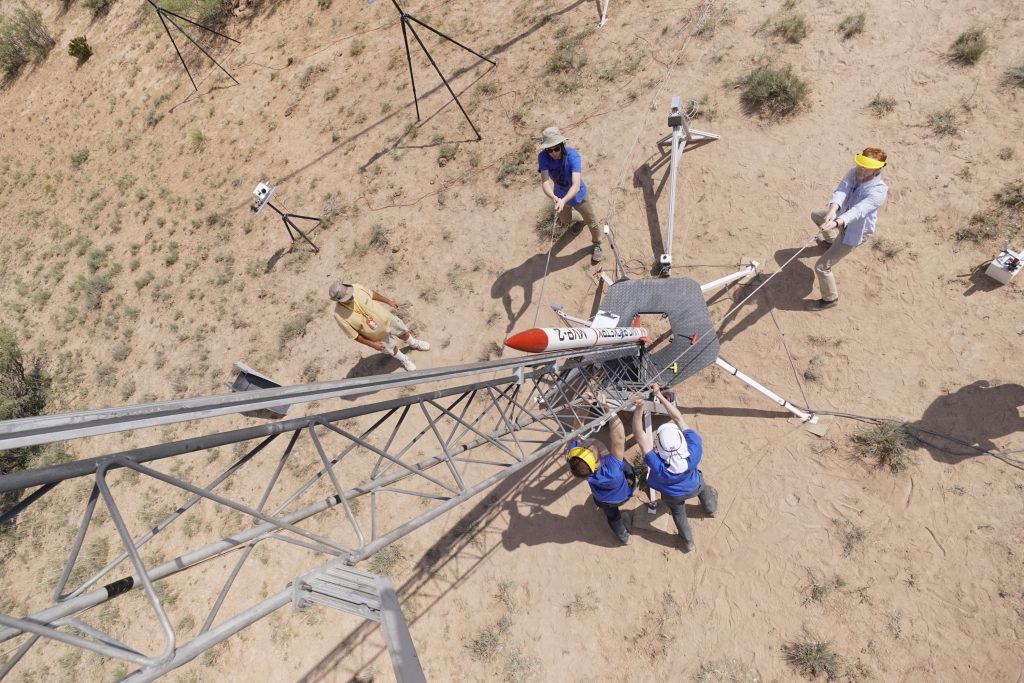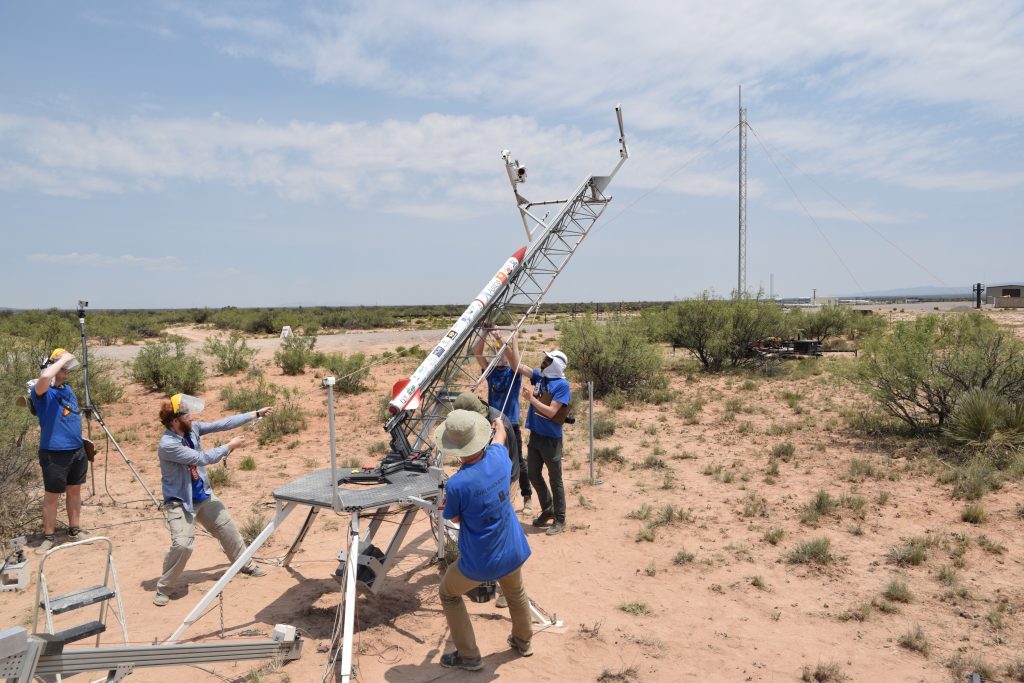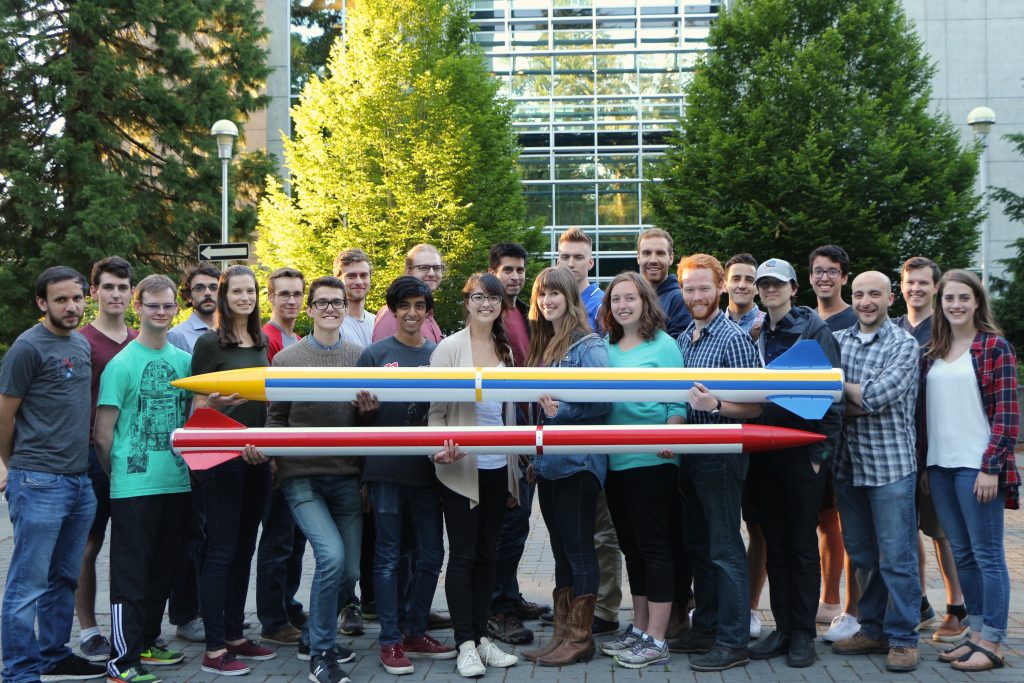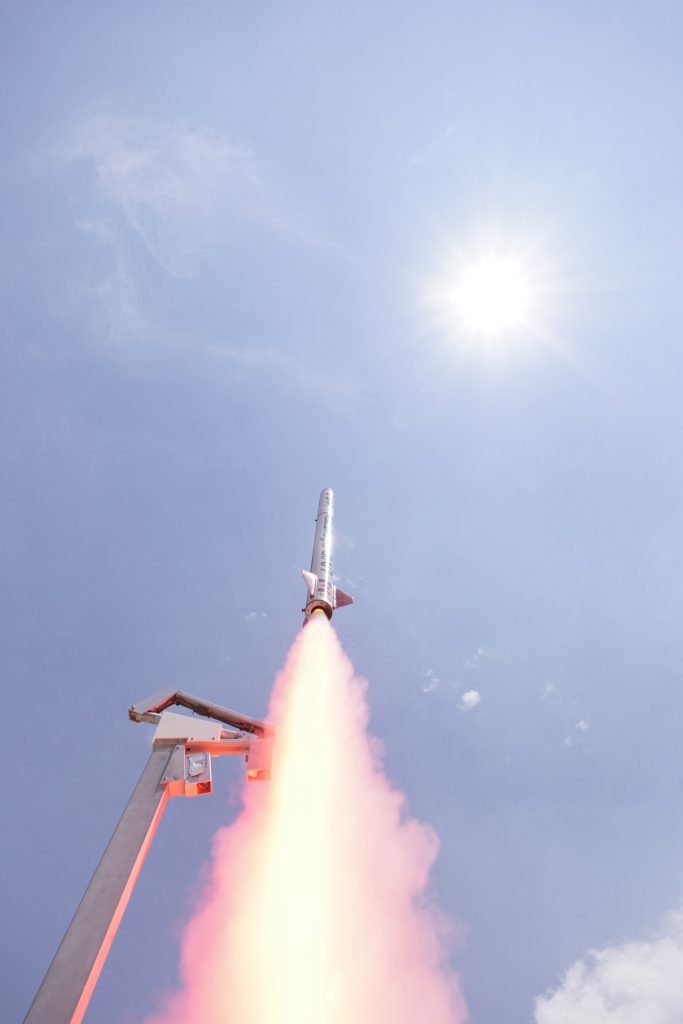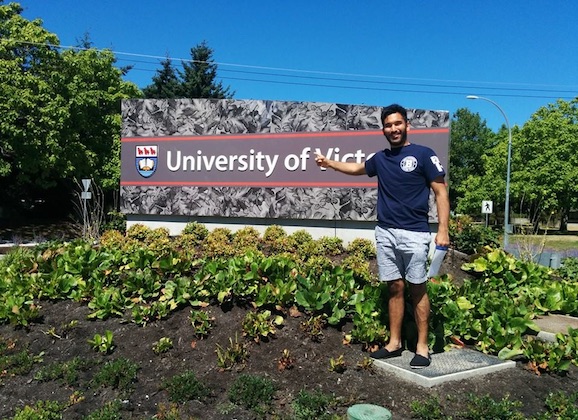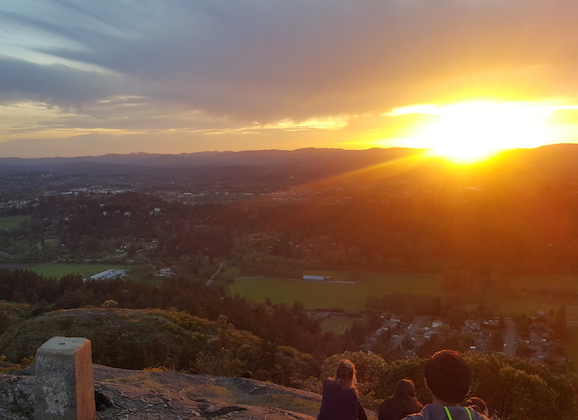Flying High with UVic’s Rocketry Team
Guest post by Kali Salmas
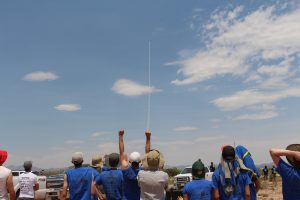 “Range is clear, sky is clear, and we are go for launch!”
“Range is clear, sky is clear, and we are go for launch!”
Clustered together, a group of blue-shirted university students are silent in anticipation as the countdown begins. This is the conclusion of a year of work, and they watch their rocket quickly take off and head to the target of 10,000 ft.
Excited as they are, it is not over yet — a large portion of the competition points come from a successful recovery with minimal damage. Someone in the crowd calls that they see an event, and the rocket is under its smaller drogue parachute. Everyone strains their eyes trying to spot the rocket until it reaches 1500 ft and the main parachute is released. Cheering, the team celebrates their success as they are congratulated by the surrounding teams.
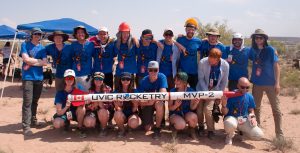 The University of Victoria Rocketry Team recently returned from the Intercollegiate Rocket Engineering Competition (IREC) Spaceport America Cup in New Mexico, the successor to the IREC competition they attended last year. This year, they brought home the first place award for the Space Dynamics Laboratory Payload Challenge!
The University of Victoria Rocketry Team recently returned from the Intercollegiate Rocket Engineering Competition (IREC) Spaceport America Cup in New Mexico, the successor to the IREC competition they attended last year. This year, they brought home the first place award for the Space Dynamics Laboratory Payload Challenge!
The payload was a proof-of-concept UV sterilization system designed to fully sterilize any spacecraft before landing on alien surfaces. As human technology becomes able to reach further in space, it becomes increasingly important to prevent spacecraft from contaminating these newly explored regions.
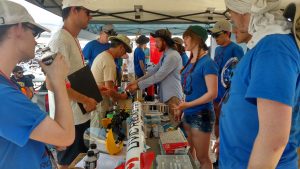 The winning payload was flown in the Skookum-1 rocket, which was designed as a more experimental rocket and carried a student-built main parachute. Skookum is a Chinook word meaning strong or brave, which the team felt was appropriate for a rocket originally intended to fly to 30,000ft.
The winning payload was flown in the Skookum-1 rocket, which was designed as a more experimental rocket and carried a student-built main parachute. Skookum is a Chinook word meaning strong or brave, which the team felt was appropriate for a rocket originally intended to fly to 30,000ft.
Also flown was a second rocket in the Minimum Viable Product line (MVP-2), focusing on simple but effective design practices. The flights of both rockets were tracked using a student-built ground station that provided in-flight data and indicated where the rocket landed. This allowed us to find each rocket within a half hour instead of spending the entire day searching as other teams did.
While MVP-2 had a completely successful flight and recovery, Skookum-1 was not so lucky. The main parachute was not properly deployed (with cause yet unknown), resulting in the rocket crashing to the ground at a high speed and causing substantial damage. However all is not lost; the crash was a much more rigorous test than what can be done in a lab and there is much to be learned!
Join the Team
There are currently over 30 active members on the UVic Rocketry Team from all faculties. The team is organized into subgroups: aerostructure, avionics, payload, propulsion, and recovery.
Any student can join, regardless of their field of study, institution, or skill level. The only requirement is a passion for good challenges and problem solving; experience with rockets is not necessary.
Moving forward, the team hopes to develop a hybrid motor to bring rockets to 30,000ft. With new heights come new challenges and new opportunities to get involved. You can learn more about UVic Rocketry on their Facebook page: facebook.com/uvicrocketry.

